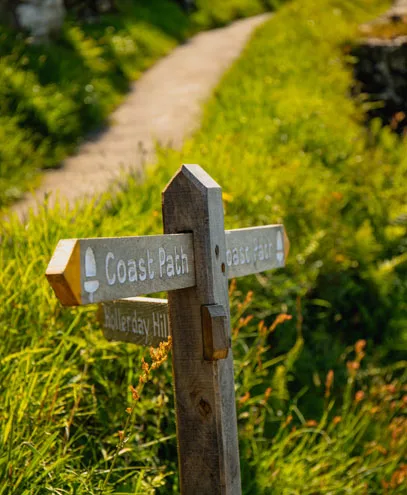

“Local hotels and guest houses provide an excellent base to explore Exmoor.”
“Just a mile from Lynton and the Cliff Railway.”
“Exmoor has abundant wildlife, including Exmoor ponies, sheep and red deer that graze the open moorland.”
Lynton is a small Victorian town perched 500ft above the town of Lynmouth with the Cliff Railway providing useful transport between the twin towns. Lynton has a selection of independent shops, galleries, tea-rooms and cafés. Many of the buildings date from the late 19th Century, most notable is the Town Hall which was given to the people of Lynton in 1900 by the publisher, Sir George Newnes, also the financier of the Lynton and Lynmouth Cliff Railway.
The Lyn and Exmoor Museum is a charming small museum housed within St Vincent’s Cottage, the towns oldest surviving domestic dwelling, and along with maritime exhibits and natural history collections it also boasts its very own ghost.
Lynton has several hotels and guest houses and provides an excellent base to explore Exmoor. Just half a mile walk to the western end of the town is the stunning and famous Valley of the Rocks, also noted for its herd of wild feral goats!
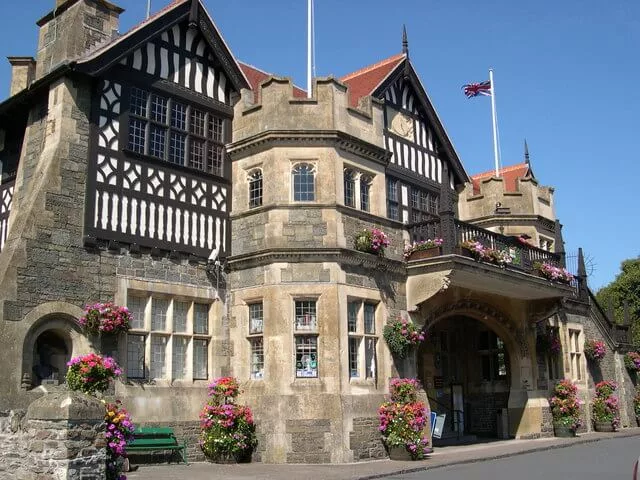
Lynmouth, once known for herring fishing, is a pretty harbour seaside town below Lynton and at the meeting point of the East Lyn and West Lyn Rivers. The Cliff Railway is perhaps the most stunning way to arrive in Lynmouth, often described as England’s ‘Little Switzerland’. The town has a history of both heroism and tragedy, the overland Lifeboat launch in 1899 resulted in 18 crew being saved, but tragedy followed on August 15th 1952 where 34 lives were lost and much of the village was destroyed during the Lynmouth Flood Disaster.
The Lynmouth Flood Memorial hall offers a free exhibition for those wanting to learn more. The harbour’s Rhenish Tower, built in the late 1850s, is an iconic landmark and was used to store salt water for baths. Lynmouth has much to offer including shops, galleries, places to eat, accommodation, beaches and the Glen Lyn Gorge. Not to be missed is the wooded walk to Watersmeet along the East Lyn River where you will be rewarded with wildlife, waterfalls and a stunning riverside Cream Tea café.
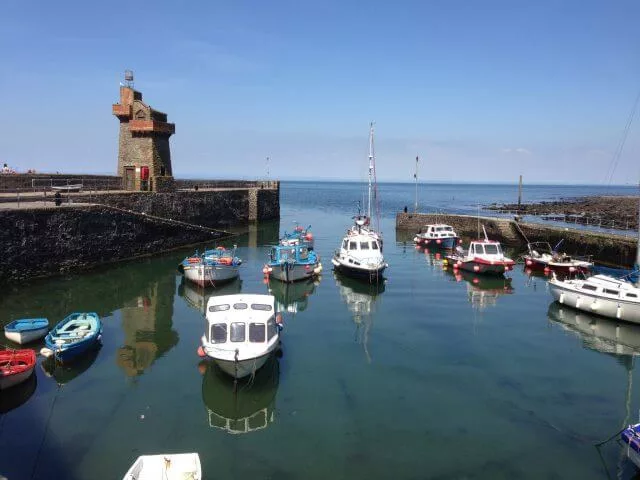
The Valley of the Rocks is just a mile from Lynton and the Cliff Railway. Created during the Ice Age, this dry valley has stunning coastal scenery, towering sea cliffs and spectacular weathered rock formations which provide a home to the valleys famous herd of feral (but friendly) goats, often seen upon the more prominent rock formations of The Devil’s Cheesering and Castle Rock. The valley is also home to Lynton Cricket Club, described as the most picturesque cricket ground in all of England. The Valley has inspired poets such as Coleridge and Wordsworth as well as the author R D Blackmore who set part of his novel, Lorna Doone, in this valley.
Not surprisingly, the valley has featured in several BBC productions and films including the 2018 feature film ‘Winter Ridge’. The Valley of the Rocks is fantastic for spotting wildlife, fossil hunting, walking and exploring.
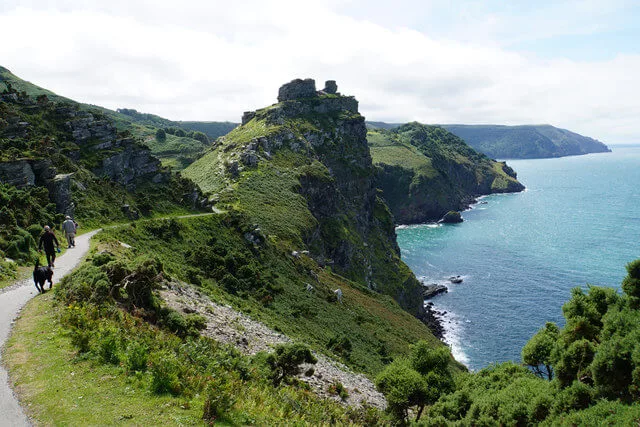
The walk along the East Lyn river from Lynmouth to Watersmeet will reward you with deep Exmoor gorges, ancient oak woodland, waterfalls, lichen covered rocks, crystal clear rivers and rare flora and fauna, including Herons and Otters. No wonder this area is described as England’s Little Switzerland.
The East Lyn is well known for its trout and salmon, the fish use the deep pools as resting places before making their way up the river’s rapids to spawn. The confluence of the East Lyn River and Hoaroak Water is at Watersmeet House, dating from 1832, this former Victorian fishing lodge has been a delightful riverside tearoom since 1901. It is now owned by the National Trust and has a small shop, WC’s and an information centre.
Other points of interest include the site of the Lynrock mineral water factory in 1911 before it was destroyed in the 1952 flood disaster. A small bottle of ginger beer set in the rock face marks the site.
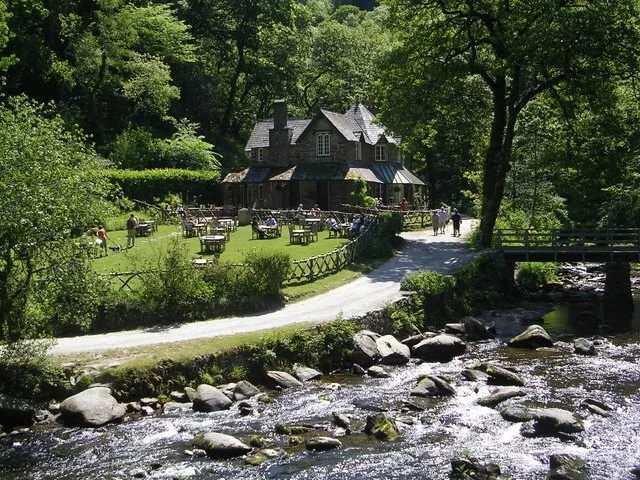
The rugged scenery of the Exmoor National Park provides over 600 miles of marked footpaths. Exmoor has abundant wildlife, including Exmoor ponies, sheep and red deer that graze the open moorland. Overhead one might see falcons, buzzards and even the rare merlin.
Exmoor National Park is full of hidden treasures and exploring this 13th century ancient royal hunting forest will reveal Bronze Age and Iron Age settlements, standing stones and cairns. Particularly beautiful is The Doone Valley, the setting for R.D Blackmore’s ‘Lorna Doone’, the hamlet of Malmsmead, Robbers Bridge and The Heddon Valley. To experience Exmoor by car try the coastal road between Lynmouth and Porlock Weir for wide open views.
Exmoor offers several long distance walks, including the Coleridge Way, The Two Moors Way and the South West Coast Path which all converge in the towns of Lynton and Lynmouth.
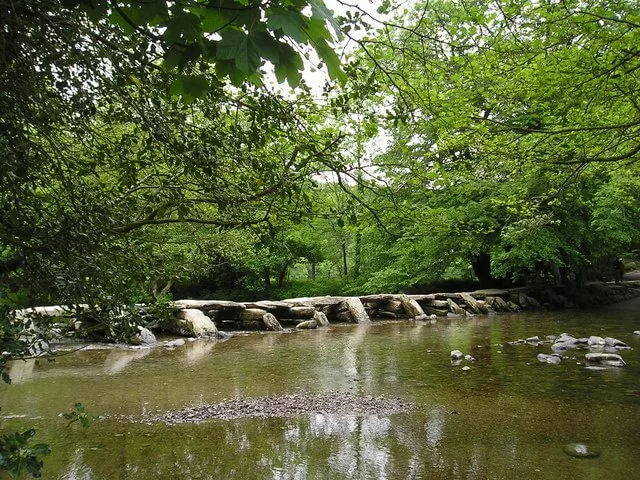
The North Coast of Devon is noted for its high sea cliffs, breathtaking natural beauty and unspoilt landscape. The South West Coast Path and many other long distance paths start (or finish) in Lynton and Lynmouth making this a walker’s paradise.
The coastline within the Exmoor National Park stretches for (59 km) 37 miles and is the highest coastline in England and Wales with coastal hills rising to 433m (1421ft) at Culbone Hill. The highest sheer cliff is 244m (800ft) on Great Hangman, which is the highest sea cliff in England and Wales. A special feature of this coast is that it is remarkably sheltered and allows for the unusual development of coastal woods. The longest stretch of coastal woodland in England and Wales can be found here.
At Combe Martin, Ilfracombe, Lynmouth and Porlock Weir there are small harbours popular with tourism and visitors.
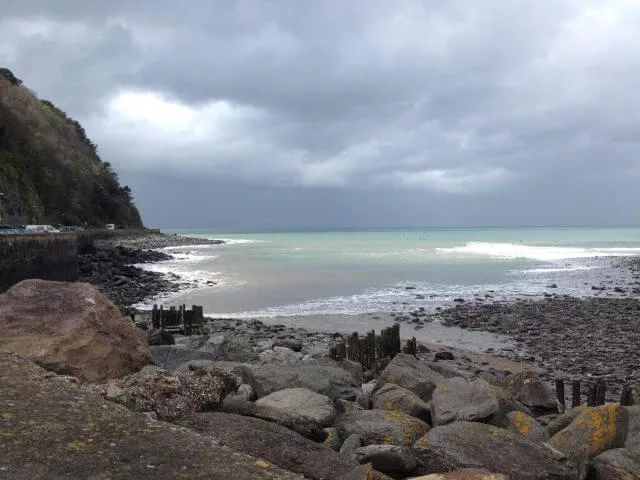
If you’d prefer not to sign up, but would still like a copy of the brochure, contact us here.
© 2025 Lynton & Lynmouth Cliff Railway